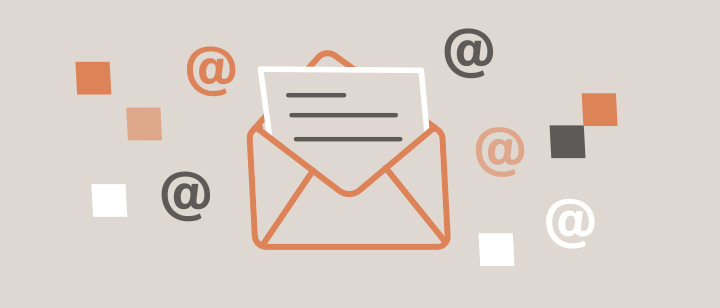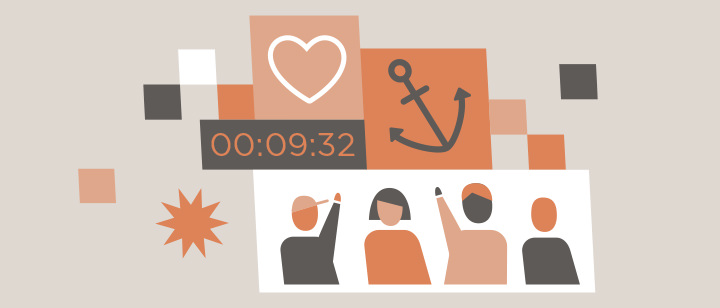
Fundraising in the Digital Age: How to Adapt in the Face of Rapid Change
Fundraising used to mean face-to-face solicitations and door-to-door engagements. Then it evolved into silent auctions, email marketing, and online bidding. But the digital age has ushered in a new era of fundraising, and with it comes a rapidly evolving advertising landscape.
Today, nonprofits and other fundraising organizations have to navigate the complexities of the changing digital environment - rapid technological advancements, shifting data privacy regulations, and the looming shadow of AI, to name a few.
Below, we’ll take a look at the various challenges nonprofits face in the face of rapidly shifting digital spaces, and strategies that could help them thrive.
The Changing Digital Advertising Landscape
Two major factors are currently shaping the advertising landscape:
-
Digital Disruption and Obsolete Strategies. Because technology advances so rapidly, traditional strategies become obsolete pretty quickly. Think about how third-party cookies are being faded out, for example, or the increasing difficulty of keeping a donor’s attention. You need to adapt your fundraising plans to keep up with digital trends and figure out new, invigorated fundraising strategies.
-
The Urgency of Adaptation. The global economic environment is no longer stable - if it ever was. As such, nonprofits and other organizations must embrace and adapt to new and disruptive digital trends. Organizations can no longer afford not to be agile; they need to be prepared to shift their models quickly and effectively.
6 Ways to Future-Proof Your Fundraising Methods
In order to secure funds and retain donors, nonprofits must redefine their advertising strategies to succeed in the digital terrain, including:
- Embrace Data-Driven Decisions. By leveraging and analyzing donor data when implementing advertising campaigns, you’ll be better able to understand your audience, personalize content, and optimize the effectiveness of your campaigns.
- Invest in Technology and Skills. To stay competitive, you need to adopt innovative tools and make use of tech platforms that enable more efficient and effective advertising campaigns. This includes silent auction apps, email campaign managers, and project management tools to keep things organized.
- Personalization and Localization of Marketing Content. By tailoring content to donors' preferences and localizing campaigns, you can enhance engagement and resonate more deeply with target audiences.
- Explore Alternative Models. Because privacy laws are so sweeping and comprehensive - think GDPR in Europe - it’s important to explore alternative models of measuring campaign performance accurately.
- Keep Privacy at the Forefront. Keeping donors’ data safe and maximizing privacy should be a strategy at the forefront of every organization’s advertising strategy. To demonstrate your commitment to protecting donor data and maximizing trust, consider shifting to a model of privacy-centric marketing.
- Leverage Donor Data for More Donations. Charities may struggle to cut through the noise and stand above competitors when trying to attract new donors using traditional advertising methods. Leveraging donor data can help significantly boost fundraising efforts with personalized, targeted campaigns tailored to donor preferences. This might mean creating donor profiles, personalizing any communications with them, or using email marketing to ask them to donate again.
Embracing Change and Staying Ahead
As technologies continue to evolve, staying agile and consistently updating your fundraising strategies can’t be understated.
In order for your organization to adapt, grow and thrive in this new era of fundraising, nonprofits must take the first step towards a future-ready advertising strategy, adapt to the evolving digital landscape, and stay ahead of the competition.

How to Use Email Marketing to Increase Donor Retention
Whether you’re running a charity, non-profit, or another organization that relies on donations, having the highest possible donor retention rate is critical for success - and this requires a well-thought-out plan.
We spoke about donor retention strategies in a previous blog post. While the four strategies that we covered are useful, there’s one that wasn’t covered. It’s perhaps the most important and powerful tool in a non-profit’s arsenal for building and maintaining long-term relationships with donors - email marketing.
Below, we'll look in detail at a few emails that can be leveraged to improve donor retention rates.
What Is Email Marketing?
Before we delve into the meaty details of exactly how you can use email marketing to increase donor retention rates, it’s helpful to first define it.
Email marketing is a digital marketing strategy that leverages sending commercial and promotional content to a list of customers using email.
It’s a powerful tool that many businesses use to communicate with their target audience, build relationships, and drive conversions on a really granular level. It’s a fantastic way to not only nurture existing relationships with donors but also grow your donor base further.
Because people have willingly signed up to your mailing list, it’s an indicator that they like your business or they’re interested in the potential value that your organization can offer. This allows you to tailor content in the form of newsletters, product updates, special offers, or other promotions, and send it directly to them.
On top of that, you also get a ton of data based on who opened your email, read it, and clicked through to whatever you were offering in the newsletter - it’s hard to overstate the value of metrics like this.
5 Effective Donor Retention Emails
Now that we know what email marketing is, let’s take a look at a number of different donor retention emails.
-
Welcome Emails for New Donors
There’s an old adage that says you never get a second chance to make a first impression.
The same applies to donor retention.
When a new donor joins your organization, you want to make them feel as warmly welcome as possible. You also want to show them the impact of their donation and demonstrate how appreciative you are that the donor chose your organization.
Welcome emails achieve this by providing the donor with information about your organization, detailing your mission and vision, and demonstrating the various ways in which the donor’s contribution will make a difference.
-
Success Stories That Demonstrate Impact
Most donors want to know exactly where their money is going and how it’s going to make a difference.
Email marketing is the perfect channel for showcasing this, particularly success and impact stories couched in a well-written email sequence.
As your organization makes progress, be sure to keep your mailing list in the loop. Share with them success stories and highlight the progress that your organization is making.
This might look like images, videos, interviews, or testimonies of the people that your organization is working with to make a difference.
Remember, people love stories. By weaving these into your emails you can craft a compelling narrative that will keep donors engaged and motivated to continue supporting you.
-
Personalized Thank You Emails
Donors like to feel appreciated and valued.
Sending a personalized thank you email after a donation can go a long way in making donors feel appreciated and recognized for their contributions.
But thank you emails have a dual purpose. Beyond displaying gratitude, you can also use them to provide additional information about any upcoming events or volunteer opportunities that your organization might have.
-
Special Event Invitations
Donors love to feel like they’re a vital part of your organization. You can demonstrate their importance by inviting them to exclusive events.
This could be an exclusive silent auction, a charity gala, an in-person auction, or even a tour that showcases the work that you’re doing.
Exclusive events are the perfect opportunity to deepen your relationships with donors and demonstrate the impact of their continued support.
-
Progress Updates on Projects
Since donors are parting with their hard-earning money to support your cause, they want to be informed of your organization’s projects.
Email marketing offers the perfect vehicle for doing just that. You can craft an email sequence that keeps your donors in the loop of your current projects, shares the vision of future projects, and provides updates on projects that have just come to fruition.
Like success and impact stories, regular updates can keep donors motivated to continue supporting your organization’s mission.
Email Marketing Can Help You Connect With Your Donor Base
Email marketing is a powerful tool for non-profit organizations to improve donor retention rates.
But it’s just one piece of the puzzle. Donor retention is an ongoing effort and will require other marketing strategies to keep your donors engaged, enthusiastic, and with you for the long run.

The Psychology Behind Silent Auctions and How to Use It to Your Advantage
There are many different facets that contribute to the success of a silent auction. The number of guests attending, the items being auctioned, the reserve prices on those items, and more. However, the psychology behind silent auctions can also impact their success. Below, we'll explore the psychology behind silent auctions and how you can use it to your advantage.
Create a Sense of Urgency and Scarcity
First, it's important to understand that silent auctions can create a sense of competition among bidders. This is because people are motivated by the idea of winning, and the prospect of obtaining an item that others are also bidding on can create a sense of excitement and urgency. This can lead to higher bids and more successful auctions.
One way to use this psychology to your advantage is to create a sense of scarcity around certain items. You can do this by limiting the number of items available or by setting a deadline for bidding. This can make bidders feel a sense of urgency to bid on the item before it's too late, leading to higher bids and more successful auctions.
Use the Anchoring Effect
Another important psychological factor to consider is the anchoring effect.
It states that people are influenced by the first piece of information they receive, and use it as a reference point when making subsequent decisions. In the context of a silent auction, this means that the starting bid can have a big impact on the final sale price.
By setting a high starting bid, you can create a reference point for bidders, which can lead to higher bids overall.
However, it's important to strike a balance between setting a high starting bid and not scaring bidders away. If the starting bid is too high, bidders may feel that the item is not worth the price and not bid at all. That’s why it’s important to research the value of the item and set a starting bid that is both reasonable and competitive.
Foster a Sense of Community
The social influence of silent auctions is another important factor to take into account.
People are often influenced by the actions of others, and in the context of a silent auction, this can lead to a bidding war. By creating a sense of community around the auction, you can encourage bidders to get involved and increase the likelihood of a successful auction.
One way to create a sense of community is to display the current bids publicly. This not only creates a sense of excitement but encourages bidders to increase their bids.
Another way is to create a social media campaign around the auction and encourage people to post about their bids publicly.
Tap Into Your Bidders’ Emotions
Finally, think about the emotions of your bidders. Emotions are often a motivating force for people to act, such as the desire to help a good cause or the excitement of obtaining a unique item. By tapping into these emotions, you can create a more successful auction.
Try showcasing the impact that the auction will have on the cause you are supporting. Include stories about how the money raised will be used, or testimonials from people who have benefited from the organization's work.
By creating an emotional connection with bidders, you can encourage them to bid more and support the cause.
Using the Right Psychological Tools Can Help Your Silent Auction
The psychology behind silent auctions is complex, but by understanding it, you can create more successful and enjoyable fundraising events.
By creating a sense of competition and scarcity, using the anchoring effect, leveraging social influence, and tapping into emotions, you can create a bidding environment that is both exciting and effective.
With the right strategies, you can create a successful silent auction that aligns with your fundraising strategy, meets your fundraising goals and provides a fun and engaging experience for all involved.

Why Setting a Fair Reserve Price Is Critical for Your Silent Auction’s Success
In order for a silent auction to be successful, it's essential to set a fair reserve price for each item. We touched on this subject in another article about bid increments but today we’ll examine it in more detail.
A reserve price is the minimum amount that an item needs to sell for. It’s a best practice when hosting a silent auction and an important consideration when determining the value of items in your auction.
Without a reserve price, you might see potentially valuable items selling for way less than they’re worth.
But with so many different types of items and values, how do you determine a reasonable reserve price?
Here are a number of things you can do to ensure that your minimum reserve price is fair and effective:
1. Research Thoroughly
The first step in setting a fair reserve price is researching the item. Look for similar items online, in catalogs, or at other auctions to get an idea of what they've sold for in the past. This will help you determine a realistic price for your item.
This rule doesn’t quite apply to every item. If the item is one-of-a-kind or has sentimental value, for example, it will probably be worth more than similar items.
Regardless, research should be a key consideration when setting a fair reserve price and as part of your strategic fundraising plan.
2. Consider the Cost
Next, consider the cost of procuring the item. The reserve price should be at least equal to the cost of acquiring the item, plus any additional expenses such as shipping or handling.
All costs, no matter how small, should be factored into both the reserve price and the best-case scenario selling price of the item to ensure your organization is not losing money.
3. Put Yourself in the Audience’s Shoes
While this might go without saying, it’s worth repeating - it's essential to consider the audience whenever you host a silent auction. If the event is for a specific cause or organization, the reserve price should be set accordingly.
For example, if the event is for a children's charity, items that appeal to families or children should have a lower reserve price than those that appeal to adults.
Another factor to consider is the number of similar items available in the auction. If multiple items are similar in value, you might want to set a fair reserve price for each item to ensure they all sell.
This helps to prevent one item from dominating the bidding and potentially preventing other items from selling.
4. Think About Value
When setting the reserve price, consider the overall value of the auction. If the reserve price is too high, it can discourage bidding and ultimately undercut the entire event’s value.
On the other hand, if the reserve price is too low, the organization may not raise as much money as it could have.
Remember that a silent auction is not the same as a live auction. In a live auction, bidders can see the current bid and bid against each other in real-time.
A Fair Reserve Price Means Silent Auction Success
In a silent auction, bidders are unaware of what others are bidding, so setting a fair reserve price that encourages bidding without discouraging it is key.

How to Develop a Strategic Fundraising Plan
As a nonprofit or charity organization, it’s important that you approach the job of fundraising intentionally. This means having a well-thought-out plan in order to achieve your fundraising goals - and the best way of doing that is with a strategic fundraising plan.
Below we detail exactly what a strategic fundraising plan is and discuss a number of methods for creating your own.
What is a Strategic Fundraising Plan?
A strategic fundraising plan is a set of plans that precisely lays out the fundraising strategies and goals of your organization.
Why is this important?
Because it gives your organization structure and a blueprint that it can follow in order to achieve its fundraising goals and fulfill its mission.
Making Your Strategic Fundraising Plan a Reality
Now that you have a better idea of what precisely a strategic fundraising plan is, let’s take a look at the steps you should follow in order to realize it.
1. Tie it into Your Mission
An effective strategic fundraising plan should tie into your organization’s mission. This means that every process of the project should be carefully coordinated so as to bring your organization - whether it’s a charity or non-profit - one step closer to achieving its overarching mission.
This could be something as simple as sending out emails to prospective donors. In that case, your mission statement should be included in every email so that your donor base is aware of what you’re trying to achieve and where their money will be going.
The same goes for events and silent auctions. Attendees should be made aware of your mission from the get-go so that it’s clear why you’re raising funds, and what your solution to the problem you’re trying to solve is.
Don’t sleep on this one - organizations without a clearly communicated message risk losing support from donors.
2. Build Your Team
An organization is only as strong as the people working there.
It’s therefore incredibly important that you have hard-working and competent people working towards executing your fundraising plan.
Determine their roles beforehand so that it’s clear who is in charge of what aspects of the strategic fundraising plan. This eliminates the guesswork about who is responsible for what task and that everyone has a clear and unobstructed understanding of what their role in the plan is.
The same is true for volunteers. Make it abundantly clear that volunteers understand what their role in the overarching fundraising strategy is so that they can readily achieve their targets and goals.
3. Develop Milestones
Milestones and objectives are important for every project, and the same is true of a strategic fundraising plan. After all, without milestones, the plan wouldn’t be very strategic.
Creating a list of clear, actionable goals is critical for breaking down the larger problem - raising money for your cause - into smaller, more manageable tasks that can be achieved in a shorter time frame.
But how do you decide on the milestones?
This largely depends on your mission. If your goal is to raise money for children's hospitals through silent auctions, a good starting point would be to determine how much money you need to support them. Once you have that information, you might think about how much money you can raise per silent auction, and how many silent auctions you need to raise that amount. That might require a large amount of research, but once you’ve finished you could turn to the problem of sourcing the items you plan to auction.
We could wax lyrical about this until we’ve written an entire case study, but the point is clear - milestones provide the blueprint that will help you achieve meaningful and tangible progress from inception to success.
4. Determine Your Timeline
Now that you’ve determined your milestones, it’s important to develop a realistic timeline in order to achieve them. Some milestones may require quite lengthy timelines - even years - whereas others are relatively short, but once you have everything laid out in front of you, you’ll have a much better understanding of how long your mission will take.
From direct email appeals to hosting events, there are various methods of fundraising, and each of them will require different amounts of time commitments. Depending on your strategy, you need to determine when you’re going to send out communications, host events, or perform other fundraising initiatives.
5. Research
If you’ve already hosted fundraising initiatives, you’ll have a lot of data to pull from in order to effectively achieve future goals.
For example, if you hosted a silent auction that raised a lot of money, you can study it to learn what worked and what didn’t, and apply that information to any silent auctions you hold going forward.
Likewise, if you hosted an event that had an underwhelming turnout, try to figure out why it didn’t perform so well. Did the demographics of the audience not align with your organization’s mission? Were the items on the auction not desirable to the audience? Was there inadequate planning?
The answer to all of these questions will give you invaluable data which you can then apply to your strategic funding plan.
6. Implement Your Strategic Funding Plan
At this point, you should have a fully fleshed-out strategic funding plan - and now it’s time to put it into action.
Many nonprofits and charitable organizations begin strong only to abandon their strategic fundraising plan halfway through the year. But this solid framework for achieving fundraising success is most effective when you stick to it.
That doesn’t mean that there isn’t wiggle room for adaptation. Quite the opposite - when you need to make changes to your plan, do so carefully and with intention. After all, there are likely to be forces outside of your control that influences the direction of your efforts. The important thing is that rather than abandon the strategic fundraising plan, you adapt it to meet the challenges of external markets.
